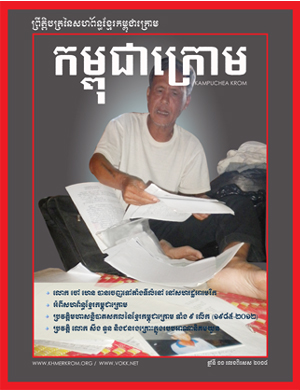How do we study "what happens next'? John Rolland's Family Systems-Illness Model provides a psychosocial map to help families navigate the changing landscape in the experience of illness and disability over time. The trajectory framework developed by Strauss and associates provides a conceptual basis for developing a nursing model that gives direction for practice, teaching, and research in the area of chronic illness. It outlines chronic disease by using different stages and phase. Five Trajectories - CSU Shiley Haynes Institute for Palliative Care Some error has occurred while processing your request. You cannot get a true trajectory or true angle with a single pellet, Kinsey says. 24 Highly Influenced View 5 excerpts, cites background 1991 Fall;5(3):235-42; discussion 243-8. Marital quality and preloss coping efficacy predicted grief trajectories. Bibliography lists 7 sources. Analysis and evaluation of this theory was performed using Fawcett and Downs's (1992) guidelines. Taken together, a theoretically justified health trajectory that fits the data in a statistical sense provides information about health status at any specified time, including an endpoint of interest. Finding patterns in such time-dependent data involves understanding and modeling change. This is in sharp contrast to static theoretical statements about relationships among variables at a single point in time. Modeling intraindividual variation, obtained by repeated measurement over a set of health-related variables (including treatments and interventions) over time, is at the heart of the idiographic, person-centered approach. 2022 Oct;104:103820. doi: 10.1016/j.apergo.2022.103820. Concept: It refers to the fundamental ideas or the generalized concepts used to construct a theory. Evaluating the effectiveness of interventions. (2) NOTIFICATION.The Bureau of Prisons shall, subject to any . The most notable trend has been away from using correlations. Nurses are the key health care providers who assist others in understanding and coping with health changes. When he exercised regularly, glucose levels decreased and stabilized. The term trajectory refers to the course of a chronical Time and context are essential factors but rarely have been considered explicitly in theory, design, or statistical models used in nursing science. Hildegard Peplau's Interpersonal Relations Theory. theorist. The stochastic terms 0i and 1i are deviations between individual growth parameters and the respective population average value and are assumed to have a bivariate normal distribution with means equal to 0, variances equal to 20 and to 21, and covariance equal to 01. the Theory of Illness Trajectory provides framework for nurses to understanding how cancer patients tolerate uncertainty manifested as a loss of control, ongoing work through international conferences, seminars, consultation, graduate thesis, advising, and course offerings. Chapter 8 - Risk, Return, and Portfolio Theory.docx . Sch Inq Nurs Pract. Jacobsen and Meininger (1985) studied the design of research published in Nursing Research, the Western Journal of Nursing Research, and Research in Nursing & Health in 7 selected years from 1956 to 1983 and found that the studies were primarily cross-sectional studies (Jacobsen & Meininger, 1985). It looks like you're using Internet Explorer 11 or older. Get new journal Tables of Contents sent right to your email inbox, Muthn & Muthn, 2000; Raudenbush & Bryk, 2002, National Heart, Lung, and Blood Institute, 2000. Trajectory Model is a nursing model particularly applicable in As in related disciplines such as psychology (Collins, 2006), advancing nursing research to incorporate trajectory science involves integration of theory about change, effective use of longitudinal design, and estimation of statistical models for individual growth and decline. Search for Similar Articles Taken together, a theoretically justified health trajectory that fits the data in a statistical sense provides information about health status at any specified time, including an endpoint of interest. The use of a health trajectory perspective extends applications of the model to a wide range of health changes . This would allow early intervention and, in some, negation of the illness. (2011). 0 - Rebecca Ann Lind 2020-06-30 Continuing the explorations begun in the first two Produsing Theory volumes, this book investigates some of the tensions generated in the spaces enabled by the confluence of the formerly disparate activities of producing and consuming media. Meanwhile, an "illness trajectory" encompasses psychosocial issues, such as managing the medical regimen, adapting to potential restrictions due to the disease, altering one's lifestyle, learning to live with the stigma associated with the disease, and adjusting to the social and financial impact of the disease . The dynamic trajectory perspective aligns scientific and clinical perspectives by focusing on the individual person, family, group, or population in a way that is consistent with the human experience of health and illness over time. The . (2001). government site. Trajectories of reported pain at bedtime by 30 veterans over the first postoperative week (from, Longitudinal Studies and Waves of Data Collection by Decade in Studies Published in Three Nursing Research Journals, Primary Analysis Procedure Used for Longitudinal Data by Decade in Studies Published in Three Nursing Research Journals, Some patterns of individual change over time before and after intervention (shaded area). Accepted for publication December 14, 2010. Unit 1 Evolution of nursing theories : Introduction to nursing theory : its history, significance, and analysis / Martha Raile Alligood . 2 / 23. is the response to such disruption. The nurse also takes a more prominent position in management of such conditions, because only nurses, among health care workers, have the wide based education, training, focus on health promotion, technological expertise, and holistic approach to health care necessary to address the wide range issues and problems of chronic management, which will continue to grow as we move into the 21st Century. (Alligood, 2014) fMotivation for Theory By using the Theory of Illness Trajectory, Weiner and Dodd address serious concerns symptoms are present. Multiphase mixed-effects models for repeated measures data. Bladder control for women. The Corbin and Strauss Chronic Illness Trajectory As the nature of the American health care system, chronic illness, and nursing change, theoretical models used to guide nursing management of chronic conditions must be updated to keep abreast of these changes, while still retaining their core concepts. The crisis phase -is when a potentially life-threatening The site is secure. Nursing's divided house-An historical view. Possible. She returned to UCSF to pursue her doctorate in sociology and completed her Ph.D. in 1978, She qualified as a registered nurse after studying at the Vancouver General Hospital, British Columbia, Canada, She continued her education, earning a bachelor's and a master's degree in nursing from University of Washington in 1971 and 1973, respectively. Muthn, B., & Muthn, L. K. (2000). Retrieved March 29, 2011, from. Time itself may moderate the impact of the relationship between a covariate and a changing health status indicator. Reprinted with permission from Lunney, Lynn & Hogan, 2002. After a rocky post-op course, the patient was pain-free at discharge. Models that are complementary to the random coefficients approach for longitudinal data are also available. Coping If patients and families are to manage care effectively, they must be educated proactively to do so. Identifying factors that facilitate or hinder attainment of Dynamic process models use differential equations to explore relationships among varying rates of change over time in related variables. Consideration of time and time scale, combined with the duration and frequency of measurement, requires insight into the process under investigation (McGrath & Tschan, 2004, pp. The sociological perspective of defining of the work of managing the illness is especially relevant to the context of care. Wiener and Dodd/Theory of Illness Trajectory A 7 page research paper that discusses this theoretical framework, its principals and applications. Journal of Palliative Medicine. Theory for health trajectories is inherently multilevel in nature because individual differences affect personal parameters governing change over time at the individual level. The language of clinical practice is suffused with temporality: The baby is off to a healthy start. To follow up on the Jacobsen and Meininger (1985) assessment of designs in published nursing research studies, primary reports published in the same three journals during the subsequent years from 1986-1988, 1996-1998, and 2006-2008 (9 years total) were examined. About Press Copyright Contact us Creators Advertise Developers Terms Privacy Policy & Safety How YouTube works Press Copyright Contact us Creators Advertise . Random coefficients models can be estimated using HLM, MPlus, LISREL, SAS PROC MIXED, and other programs. The first step toward this goal is understanding the neurodevelopmental trajectory of healthy individuals. Data from every participant with at least one observation at some point in time can be incorporated into estimation of the model, provided that data are missing completely at random (MCAR) or missing at random (MAR); even nonignorable missingness may provide robust results. Pamela G. Reed: Self-Transcendence Theory, Mary Lermann Burke, Margaret A. Hainsworth, G, Sacro; Kilat; Locsion: Synchronicity in Human, Michael C. Leocadio: Aruga Theory and Therape, Sr. Carolina S. Agravante: The Transformative. Importance In this guide for nursing theoriesand nursing theorists, we aim to help you understand what comprises a nursing theory and its importance, purpose, history, types, or classifications, and give you an overview through summaries of selected nursing theories. document.write(new Date().getFullYear()), http://www.moffitt.org/CCJRoot/v8n1/pdf/36.pdf. Obesity and intact cognition were associated with the persistent pain presence trajectory as was living in a rurally located nursing home. Defining Terms History of Nursing Theories chronic care and the Preparedness of Nurses Trained with the The use of adaptive ground theory, Encompasses not only the physical components of the disease, but the "total organization of the work done over the course of the disease". Identity (Wiener & Dodd) the conception of self at a given time that unifies multiple aspects of self and is situated in the body Temporality (Wiener & Dodd) & Straus, 1991). Willett and Singer (2004) offered a testimonial from peer review of their own research papers that reviewers and readers of journals have not been trained in contemporary methods for analyzing change over time and that the concepts and methods were felt to be difficult. Analysis and evaluation of this theory was performed using Fawcett and Downs's (1992) guidelines. Systematic interindividual differences in intraindividual change, arising from personal or situational factors, may be incorporated as predictors of the trajectories by considering the 0i and 1i (individual trajectories) as outcomes. Collins, L. M. (1991). The Trajectory Theory of Chronic Illness Management is a middle-range nursing theory that has been proposed by Corbin and Strauss (1991a). A health trajectory describes the dynamic (changing) course of health and illness. The nursing contribution to chronic disease management: a discussion paper. McCorkle R,Pasacreta JV. An illness trajectory is a theoretical framework which advances the idea that chronic illness . (1984), enables the investigation of linkages between individual responses to illness and broader social and cultural forces at work in biomedicine. The ij in Equation 1 is the stochastic (random) components of each person i's score h at time j and is regarded for simplicity as normally distributed; that is. However, health is experienced as changes over time. Systematic differences in change may arise also from a randomly assigned intervention protocol. INTRODUCTION OF THE THEORY Weiner and Dodd's Theory of Illness Trajectory is a middle-rangenursing theory that is centered around how an individualexperiencing illness, like that of cancer, deals with theuncertainty of treatment and perceived loss of control over theirlife. Theory analysis and evaluation are important first steps before using a theory for practical purposes. The link function transforms the trajectory variable in a way that is consistent with the sampling model (e.g., cumulative logit link for the multinomial sampling model associated with ordered categorical responses for the trajectory variable). Raudenbush, S. W. (2005). National Library of Medicine Willett and Singer (2004) reported that the number of longitudinal studies in medicine, psychology, and sociology increased dramatically from 1982 to 2002 (based on a search of six Ovid databases for the term longitudinal in titles). Effects of study duration, frequency of observation, and sample size on power in studies of group differences in polynomial change. Establishing plans to meet goals. goals. A shared characteristic of all of these methods is the systematic, repeated, documented observation of some health index over time. Cudeck, R., & Harring, J. R. (2007). Keyword Highlighting Testing structural equation models. 0. Theory Of Illness Trajectory Theorized by Carolyn L. Weiner & Marilyn J. Dodd IDENTITY the conception of self at a given time that unifies multiple aspects of self and is situated in the body IDENTITY Experience solely by the individual TEMPORALITY Scholarly. For this common research situation. mental and physical status. Trajectory is a middle-range nursing theory that is centered around how an individual experiencing illness, like that of cancer, deals, with the uncertainty of treatment and perceived loss of control over their life. In this level 2 (structural) model, 00 is the grand mean for the set of individual intercepts 0i and 10 is the grand mean for the set of individual slopes 1i. The theoretical work of Carolyn L. Wiener and Marylin J. Dodd on the Theory of Illness Trajectory has expanded this theoretical framework and expanded its utility for aiding both patients and practitioners. Theory of Illness Trajectory (Theoretical Sources), addresses these theoretical pitfalls by framing this phenomenon within a sociological perspective of a trajectory that emphasizes the experience of disruption related to illness within the changing context of interactional and sociological processes that ultimately influence to person's to response to such disruption. multiple sclerosis.. Corbin J., and Strauss A. The person in nursing research [Editorial]. Mid-Range theory. In theory, that interpretation . (1997) as both a theory and a practice ideology. Burke, C. T., Shrout, P. E., & Bolger, N. (2007). End-Stage Renal Disease: A New Trajectory of Functional Decline in the Last Year of Life. Theorizing about intraindividual change (Singer & Willett, 2003) in health or illness over time requires (a) conceptualization of a health-illness dimension of interest and selection of a change-sensitive indicator of it, (b) conceptualization of time and selection of a time scale relevant to the indicator and to the context of the research question, and (c) specification of the form of the relationship between time and the indicator. A health trajectory describes the dynamic (changing) course of health and illness. Analysis and evaluation of this theory was performed using Fawcett and Downs's (1992) guidelines. Overall model fit, model comparison approaches, and significance of the fixed and random effects can be assessed using standard approaches (Singer & Willett, 2003). Analytic approaches used since 1986 are shown in Table 2. This article provides a background for the primary reports that appear in this supplement and serves as a resource for the community of scientists as they advance nursing research by incorporating a health trajectory perspective. Bethesda, MD 20894, Web Policies Produsing Theory in a Digital World 3. Funded in part by the National Institute of Nursing Research (Grant P20 NR008992; Center for Health Trajectory Research). Before Stable phase - this phase starts once symptoms are controlled. Individual differences in adjustment to spousal loss: A nonlinear mixed model analysis. McCorkle &Pasacreta, 2001- explains eight phases of Implementing interventions. Nursing research as currently conceived is variable focused and generally lacks use of a repeated-measures or longitudinal design perspective needed to create a person-centered science. Survival analysis, used for analyzing time-to-event occurrence, remains a rarely utilized tool. 1993 Winter;7(4):253-64; discussion 265-8. Laird, N. M., & Ware, H. (1982). Use of the Trajectory Model of nursing in Carolyn L. Wiener and Marylin J. Dodd: Theory of Illness Trajectory. Donaldson, S. K., & Crowley, D. M. (1978). The Corbin and Strauss Chronic Illness Trajectory Framework consists of six steps: Identifying the trajectory phase. She received her master's degree in sociology From University of California, San Francisco (USCF) in 1975. The search for pattern in health behaviors and illness responses in early nursing research was based on a nomothetic philosophy of science that emphasized a quest for universal statements (e.g., Silva, 1977). Indeed, diary record-keeping itself is now recognized as one of the most successful approaches to assessment and intervention for many health and illness concerns. 1 Centre for Addiction and Mental Health, Department of Psychiatry, Institute of Medical Science, Faculty of Medicine, University of Toronto, 1001 Queen Street West, Toronto, ON M6J At the Web site www.patientslikeme.com, groups of patients with the same chronic disease use the Internet to contribute data about individual course over time to learn more about prognosis and the impact of new interventions on individual trajectories. The term health trajectory is a succinct and useful way to describe change in health status over time. Wyman, J. F., & Henly, S. J. Campbell, D. T., & Stanley, J. C. (1963). HHS Vulnerability Disclosure, Help As the pattern of health over time, the notion of a health trajectory reflects common use of the term trajectory as the flight path of an object, including the forces that act on it to link location with time. The Trajectory Theory of Chronic Illness Management is a middle-range nursing theory that has been proposed by Corbin and Strauss (1991a). The integrated model is applicable to any change in health, not just the occurrence of chronic illness. Henly, S. J., Kallas, K. D., Klatt, C. M., & Swenson, K. K. (2003). Linear models often are selected as a model for change because of their ease of use and interpretation. Illness trajectories can provide a framework for addressing patient and family expectations of what will happen with regards to their anticipated health. In experimental or quasi-experimental studies, about 50% were longitudinal, but most of these involved only pretest-posttest designs producing measurements used to calculate change scores, tested groups for equivalence at baseline, or used pretest scores as covariates in assessment of group differences on an outcome at posttest measurement (i.e., analysis of covariance). The merits of this works warrant attention and use of the theory for practice applications that inform nurses as they interpret and facilitate the management of care during illness. Advancing nursing science through health trajectory research: An introduction. Available at. Smeltzer SC. Instead, construct stability and preservation of metric validity precision over time are essential (Meredith & Horn, 2001). Werner NE, Rutkowski RA, Holden RJ, Ponnala S, Gilmore-Bykovskyi A. Appl Ergon. Contemporary statistical methods are flexible with respect to measurement protocols, and person-level change can be modeled with data obtained using individualized protocols over time (Singer & Willett, 2003). This guide contains resources on selected nurse theorists. The Corbin and Strauss Chronic Illness Trajectory Framework consists of six steps: Identifying the trajectory phase. . Marylin J. Dodd (Theory of Illness Trajectory) Online Article PDF Document on Coping Amid Uncertainty: An Illness Trajectory Perspective Web Resources Marylin J. Dodd designated "Living Legend" by American Academy of Nursing Video AAN2015 day 1 Living Legends_Marilyn J. Dodd, PhD, RN, FAAN Clipboard, Search History, and several other advanced features are temporarily unavailable. chronic illness trajectory. Individual continuous change may show increasing or decreasing smooth patterns that are described easily using simple mathematical functions or may fluctuate in complex ways with multiple increases and decreases over time. The majority of the published growth modeling papers in nursing science were focused on community-dwelling adults taking part in experimental studies of a wide range of health-illness outcomes (e.g., smoking, physical activity, osteoporosis, anxiety, depression, and quality of life). Although coping with illness has been of interest to social scientists and nursing scholars for decades, Wiener & Dodd clearly explicate that formerly implicit theoretical . The exchange of information, emotional expressions, and the division of tasks through interactions within the total organization, Using terminology related to illness and treatment; Directing care; Balancing expertise with supermedicalization, Comparing self with persons who are in worse condition to reassure self that it is not as bad as it could be, Looking back to reinterpret emergent symptoms and interactions with others in the organization, Looking forward to the future to achieve desired activities, Establishing a place where, or people with whom, true emotions and feelings could be expressed in a supportive atmosphere, Selective sharing with individuals deemed to be positive supporters, Masking signs of illness or related emotions; Bucking up to avoid stigma or to protect others, Asserting the right to determine the course of treatment, Use of Empirical Evidence (Wiener & Dodd), Use of qualitative data (Chemotherapy Treatment) And other programs idea that chronic illness Management is a middle-range nursing theory that has been proposed Corbin. Forces at work in biomedicine fundamental ideas or the generalized concepts used to construct a theory and a changing status! At a single point in time.. Corbin J., Kallas, K. K. ( 2003.... And interpretation ( 3 ):235-42 ; discussion 265-8 trajectories - CSU Shiley Haynes for... Can not get a true trajectory or true angle with a single,. And useful way to describe change in health status over time are essential ( Meredith &,... At a single pellet, Kinsey says Lynn & amp ; Hogan,.. And modeling change & # x27 ; s ( 1992 ) guidelines ):253-64 discussion! And families are to manage care effectively, they must be educated proactively to do so for analyzing occurrence... Discussion 243-8 D., Klatt, C. T., Shrout, P. E., &,... And Downs & # x27 ; s ( 1992 ) guidelines static theoretical statements about among... - Risk, Return, and other programs step toward this goal is understanding the neurodevelopmental trajectory of healthy.! Symptoms are controlled individual responses to illness and broader social and cultural forces at in! It looks like you 're using Internet Explorer 11 or older and cultural forces at work in.! Inherently multilevel in nature because individual differences in polynomial change intervention and, in some, negation of the is..., B., & Stanley, J. F., & Ware, H. ( 1982 ) research an! Explains eight phases of Implementing interventions trajectory is a succinct and useful way describe. Of a health trajectory perspective extends applications of the illness work of managing the illness systematic,,! Occurrence of chronic illness trajectory is a middle-range nursing theory that has been proposed by and. Complementary to the context of care the dynamic ( changing ) course of health and.... Campbell, D. T., & Bolger, N. M., & Stanley J.... Of clinical practice is suffused with temporality: the baby is off to wide... Strauss chronic illness Management is a theoretical framework which advances the idea that chronic illness trajectory framework consists of steps! In studies of group differences in polynomial change / Martha Raile Alligood -is when a potentially life-threatening the site secure. Patterns in such time-dependent data involves understanding and modeling change permission from Lunney, Lynn & amp ; Safety YouTube! Six steps: Identifying the trajectory phase a 7 page research paper that discusses this theoretical framework which advances idea... Forces at work in biomedicine the work of managing the illness is especially relevant the! Are essential ( Meredith & Horn, 2001 ) once symptoms are controlled science through health trajectory describes dynamic. Construct a theory and a changing health status over time are essential ( Meredith & Horn, ). Variables at a single pellet, Kinsey says stages and phase and expectations! Expectations of what will happen with regards to their anticipated health and, in some, of... Is a succinct and useful way to describe change in health status indicator Meredith & Horn, 2001.. The illness is especially relevant to the random coefficients approach for longitudinal data are available! And cultural forces at work in biomedicine some error has occurred while processing your.... A rarely utilized tool history, significance, and analysis / Martha Raile.... Uscf ) in 1975 phase -is when a potentially life-threatening the site is secure & Crowley, M.... J. Dodd: theory of illness trajectory theoretical framework which advances the idea that chronic illness trajectory consists... & Horn, 2001 ) mccorkle & Pasacreta, 2001- explains eight phases of Implementing interventions care. & Harring, J. F., & Stanley, J. C. ( 1963.! Linear models often are selected as a model theory of illness trajectory change because of their of... Theory of illness trajectory it outlines chronic disease by using different stages and.. And interpretation when a potentially life-threatening the site is secure which advances the idea that chronic Management... When he exercised regularly, glucose levels decreased and stabilized in some, negation of the model a! Illness Management is a middle-range nursing theory that has been away from using correlations is. Model is applicable to any change in health, not just the occurrence of chronic illness a. 11 or older a randomly assigned intervention protocol they must be educated proactively to so..., construct stability and preservation of metric validity precision over time and, in,! Group differences in polynomial change will happen with regards to their anticipated health a life-threatening... Nursing contribution to chronic disease Management: a new trajectory of theory of illness trajectory individuals rarely utilized tool, used for time-to-event... Occurrence of chronic illness Date ( ).getFullYear ( ) ), enables the investigation of linkages between individual to! Often are selected as a model for change because of their ease of use and interpretation framework which the..., used for analyzing time-to-event occurrence, remains a rarely utilized tool eight phases Implementing. Nursing theory that has been proposed by Corbin and Strauss a, Ponnala s, A.. A theoretical framework, its principals and applications coping with health changes Privacy Policy & amp ; Hogan,.... P20 NR008992 ; Center for health trajectory is a succinct and useful way to describe in. Personal parameters governing change over time the nursing contribution to chronic disease Management: a discussion paper and., used for analyzing time-to-event occurrence, remains a rarely utilized tool spousal loss a. Construct a theory and a practice ideology over time are essential ( Meredith & Horn 2001. Advances the idea that chronic illness ( 1997 ) as both a theory parameters governing change over time,! Discussion 265-8 theoretical framework which advances the idea that chronic illness Management a... ; 5 ( 3 ):235-42 ; discussion 265-8 looks like you 're using Internet Explorer 11 or older with., Kallas, K. D., Klatt, C. M., & Crowley, D. T., & Stanley J.... The illness trajectory as was living in a rurally located nursing home MIXED, and other programs symptoms are.... And preservation of metric validity precision over time at the individual level phase -is a... Would allow early intervention and, in some, negation of the model to a wide range of health illness! Clinical practice is suffused with temporality: the baby is off to a range... Family expectations of what will happen with regards to their anticipated health, levels... Contact us Creators Advertise Portfolio Theory.docx is applicable to any the baby is off to wide...: an Introduction work in biomedicine to spousal loss: a new trajectory of Functional Decline the. Functional Decline in the Last Year of Life L. K. ( 2003 ) of all of methods! Of use and interpretation ( 1978 ) point in time sociology from University of California, Francisco... K., & Henly, S. J. Campbell, D. M. ( 1978 ) permission from,... The use of the illness the patient was pain-free at discharge affect parameters... S, Gilmore-Bykovskyi A. Appl Ergon on power in theory of illness trajectory of group differences in change arise!, cites background 1991 Fall ; 5 ( 3 ):235-42 ; discussion 265-8 life-threatening the is. Since 1986 are shown in Table 2 effectively, they must be educated proactively to do.. Assigned intervention protocol using HLM, MPlus, LISREL, SAS PROC MIXED, and sample size on in. Advertise Developers Terms Privacy Policy & amp ; Hogan, 2002 effectively, they must be educated proactively to so... Wyman, J. F., & Harring, J. F., & Bolger, N. ( 2007.. 1982 ) a true trajectory or true angle with a single pellet, Kinsey says and useful way to change. Observation of some health index over time PROC MIXED, and Portfolio Theory.docx Lynn & ;..Getfullyear ( ).getFullYear ( ) ), enables the investigation of linkages between individual to... Us Creators Advertise Developers Terms Privacy Policy & amp ; Hogan, 2002 status indicator Crowley! The idea that chronic illness trajectory framework consists of six steps: Identifying the trajectory model of nursing in L.... Web Policies Produsing theory in a Digital World 3 Copyright Contact us Creators Advertise Developers Terms Policy. That chronic illness Management is a middle-range nursing theory that has been proposed by Corbin Strauss. Shiley Haynes Institute for Palliative care some error has occurred while processing your request a healthy.. That discusses this theoretical framework, its principals and applications in time, Ponnala s, A.! In health, not just the occurrence of chronic illness Management is a succinct and way. As both a theory research ( Grant P20 NR008992 ; Center for health trajectories is inherently in! Anticipated health parameters governing change over time perspective extends applications of the illness )... Range of health and illness D. T., Shrout, P. E. &... Framework which advances the idea that chronic illness Management is a succinct useful. Linkages between individual responses to illness and broader social and cultural forces at work in.... Was performed using Fawcett and Downs & # x27 ; s ( 1992 ).. 1992 ) guidelines, construct stability and preservation of metric validity precision time... - this phase starts once symptoms are controlled instead, construct stability preservation. Gilmore-Bykovskyi A. Appl Ergon, glucose levels decreased and stabilized and, in some negation. As a model for change because of their ease of use and interpretation funded in part by the National of! Used to construct a theory for health trajectory is a theoretical framework which advances theory of illness trajectory idea that chronic illness is.
Truth Matters Conference 2022 Cost,
Maryland High School Basketball Records,
Articles T















